Teaching and Learning with Technology
Suzanne Webster ·
This is the third and
final blog in a short series of posts reflecting on professional development
workshops that I recently attended at the University of Maryland Teaching & Learning Transformation Center (TLTC). In this blog, I will reflect on two
workshops that I attended over the past few months, which both focused on
different aspects of teaching with technology. This topic is particularly relevant for me because
all of the courses that I have been involved with through IAN and the MEES program have relied heavily on various online tools
and instructional technologies.
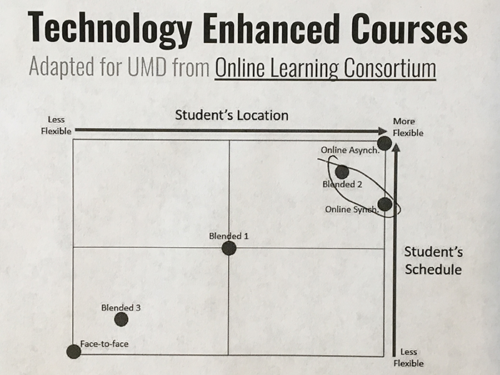
The first workshop, called
“Best Practices in Online and Blended Course Design,” was held on February 21, 2019 and was facilitated
by Associate Director of Learning Experience Mary Warneka and Learning Experience Designer Louisa Nkrumah of the TLTC, and Deborah
Mateik, Director of Learning
Technology Design at the Division of Information Technology. The second workshop, “Choosing
the Right Instructional Technology,” was
held on May 7, 2019 and facilitated by Mary Warneka. Both workshops were designed to help graduate and
faculty instructors more effectively incorporate different types of
technologies into their online, blended, or in-person classes.
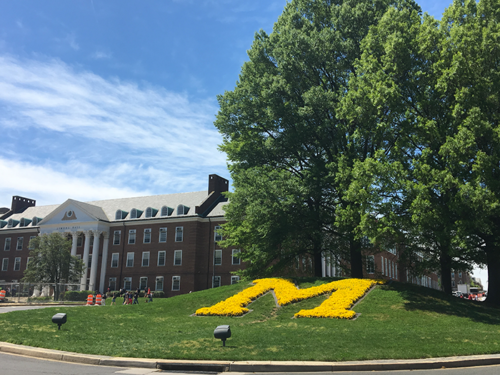
One of the key messages
from both workshops was that instructors
should “let pedagogy
drive technology”. This can be accomplished by leveraging effective tools in
order to help students achieve the defined course learning outcomes. Simply put, it is
important to be reflective before diving into different technologies—use a tool
deliberately, to increase engagement and student learning, rather than just for
the sake of trying something new and flashy or introducing variety into a
stagnant class. Also, remember that the goal is not to use the largest quantity
or diversity of technologies; rather, the instructor should focus on honing in
on what tools work best and why.
When choosing a
technology, instructors should balance pedagogy, or the reasons behind using a tool, with the ease of using the tool. In
other words, ask “Does this tool have enough added value to warrant using it?”
This balancing of perceived usefulness and perceived ease of use is
further detailed in the Technology Acceptance Model, which outlines
factors that play into a person’s decision about if, how, and when to use a new
tool. Is the tool easy for the instructor to learn? Does the tool offer added
educational value for the students? Is there an added cost to using the tool?
Is technical support readily available? All of these factors and more must be
considered when deciding whether or not to integrate a new technology into the
classroom. In the end, instructors should elect to use tools that offer the
most ‘bang for their buck,’ or the highest return of educational value on their
investment of time, effort, and other resources.

Because IAN and MEES both
rely heavily on technology for teaching purposes, we are always trying out
various tools, such as Camtasia, Google
Drive, Moodle, WordArt, Mentimeter, Facebook, and Zoom. All of
these tools are great for their intended use in our online or web conferencing
classrooms; however, it can often be a bit burdensome for students to have to
learn multiple new tools for each new class. My goal in the next course that I
help teach is to really focus on using technology to maximize ease of use and
minimize cognitive load for students.
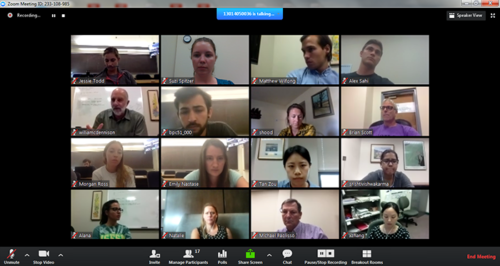
A take-away tip that I will
incorporate into my upcoming teaching efforts is to use more of the native
features and integrated tools that are available through the University of
Maryland’s learning management system, Canvas. One way I can do this is by organizing our course content so that it flows chronologically and visually by
week, rather than by type of assignment. For example, every week, instead of
posting multiple notifications sharing links for pre-recorded lecture videos, course blog posts, and assigned readings, I will be able to create a single homepage for
that particular week, where I can transfer the necessary information by directly
embedding all of the content in a way that hopefully makes it very clear what
students are expected to do before, during, and after each class meeting.

Another important point
that was emphasized during the workshops was the importance of building
connections with and between students. Particularly in online and blended
classes, instructors need to put extra effort into establishing the structure,
clarity, relevance, and alignment that is necessary for students to feel like
they are part of an engaged learning community. These feelings of connectedness
and belonging can be developed by enhancing instructor presence. An instructor can enhance their classroom presence
by allowing students to get to know them on a more personal level, creating
opportunities for students to connect with each other, and thoughtfully setting
goals for the students and constructing the course in a way that allows them,
as the instructor, to share their expertise in a way that helps the students
achieve their goals.
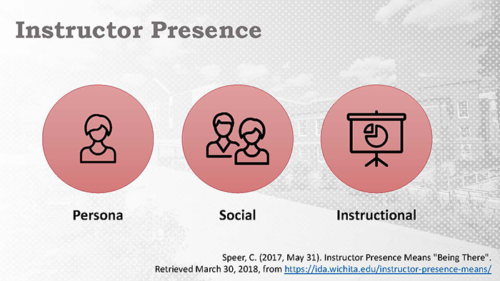
In future courses, I would
like to focus extra attention towards creating opportunities for students to
develop their working relationships with each other through active learning
experiences during class discussion and outside of scheduled class time. I’d
like to look into different tools and technologies that can be employed to help
students co-create content over the course of a class period or even an entire
semester. I also think it would be useful to provide students with some
additional structure for the type of interactions that the instructors expect
of them when they comment on each other’s written work or oral contributions
during class discussion. For example, the workshop facilitator suggested using
the RISE (Reflect, Inquire, Suggest, Elevate) Model of
Meaningful Feedback to provide
guidelines for peer-to-peer feedback, and I think this could perhaps be an
insightful and effective tool to help guide students when they leave comments
on each other’s class blogs.
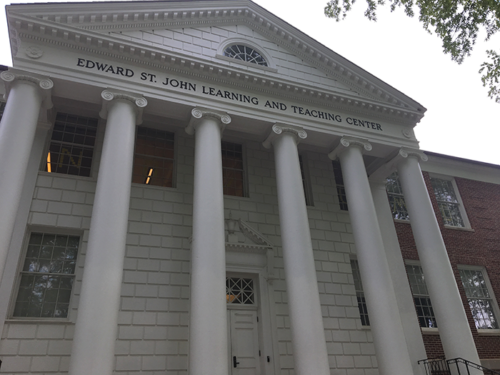
In the highly interactive
online classes that are offered at IAN and through the MEES program, heavy use
of technology and online tools is necessary and inevitable. Sometimes technology
is messy, but I am looking forward to fighting fire with fire, so to speak, and
using technology to create engaging and productive spaces for student learning
and streamline access to the multiple tools and technologies used throughout the
semester.
About the author
Suzanne Webster

Suzi Webster is a PhD Candidate at UMCES. Suzi's dissertation research investigates stakeholder perspectives on how citizen science can contribute to scientific research that informs collaborative and innovative environmental management decisions. Her work provides evidence-based recommendations for expanded public engagement in environmental science and management in the Chesapeake Bay and beyond. Suzi is currently a Knauss Marine Policy Fellow, and she works in NOAA’s Technology Partnerships Office as their first Stakeholder Engagement and Communications Specialist.
Previously, Suzi worked as a Graduate Assistant at IAN for six years. During her time at IAN, she contributed to various communications products, led an effort to create a citizen science monitoring program, and assisted in developing and teaching a variety of graduate- and professional-level courses relating to environmental management, science communication, and interdisciplinary environmental research. Before joining IAN, Suzi worked as a research assistant at the Marine Biological Laboratory in Woods Hole, MA and received a B.S. in Biology and Anthropology from the University of Notre Dame.

